Technographic listening: an experiment in feedback
By Rodolfo Caesar
Abstract
A feedback-loop between electroacoustic devices and my own perception resulted in the ‘discovery’ of something that had been in front of me all the time. By using the concept of technographic traces, I attempt to describe processes in which technologies reveal some sort of subjectivity. Drawing analogies with the rocking of trains, and altered states of consciousness, as in Paul Valéry’s prose and in Cartesian rationalism, the main objective is to testify, again, on technology’s role in shaping perception and understanding.
Keywords
rhythms out-of-sync, technographic listening, technological subjectivity, sonology, driving feedback, cogitamus
Crossing two lines
This text results from the intersection of two lines of research that I have been busy with for some time: the first deals with what we hear from so-called Nature, and the second with the interaction between music and technologies. The title I have been using to describe my recent research sums up how and where I have been placing my curiosity and myself: “Listening: between the animal and the robot.”
Firstly, I will describe one of the founding examples of my interest concerning the expression of animal sounds: “analysis and synthesis of a-metric sounds produced by anurans and insects” (Caesar, 1996, 1997, 2002, 2008). As many composers intrigued not only with ornithology, from Vivaldi to Messiaen, but also with animal sounds in general – like Tato Taborda (Taborda, 2004) – and because I deal mainly with electroacoustic media, I became interested in the rhythmic patterns of frogs, crickets, cicadas, etc. The sample that triggered my curiosity shows two frogs, microphonically set apart doing their (perhaps unintentional) number, going in and out of sync.
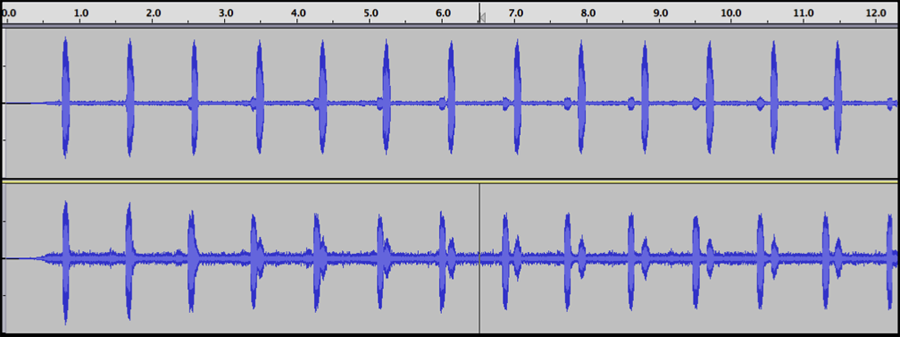
Fig 01. Sound 1’s waveform showing progressive out-of-sync between two frogs.
In 1973, John Chowning invented a prolific way of using Frequency Modulation for musical purposes (Chowning, 1973). He transposed the mathematical model from its usual finality as a radio wave communications tool. What he did was a transposition of the speed of frequencies and a replacement of the radio wave medium with the acoustic one, thus enabling the building of rich musical timbre, unavailable through the subtractive and additive methods employed at that time. Following my compositional purposes of rhythmic patterns, I took Chowning’s transposition one step further, by reducing the device’s operator speeds to another dimension, so as to have frequencies located below the audio spectrum, which resulted in a rich way of building durations, otherwise too complicated to write by means of graphic notation. The next examples show two different interpretations of what the ‘natural’ world played to my ears, made possible via FM.
The use of FM is exemplified in figure 2 where we see a group of grains describing an up-and-down curve, with the curve affecting the acceleration, the pitch and the volume of each grain:
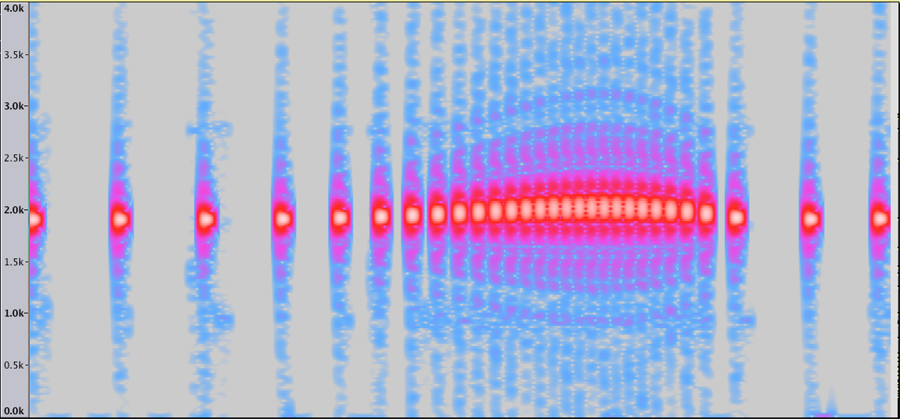
Fig. 02: Grains describing a curve.
It sounds like this:
If we modulate the same curve by an oscillator with the same shape, it may result in the shape below:
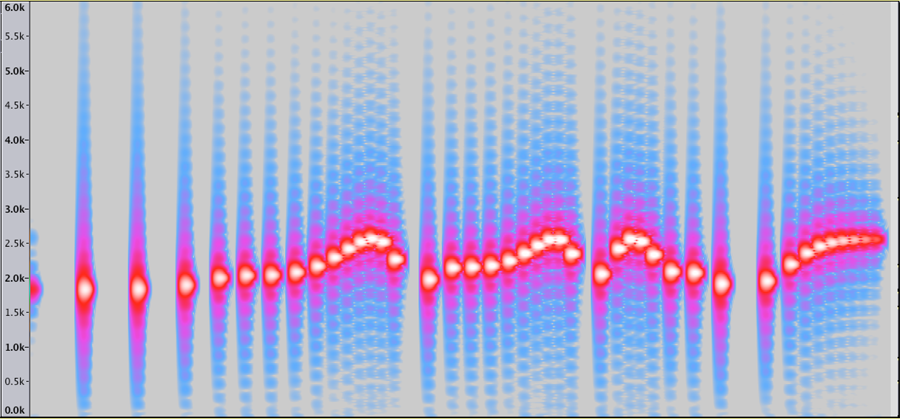
Fig. 03: Grains modulated by an oscillator
It sounds like this:
Until now, I described the presence of two different tools stemming from recent technologies involved in a process of knowledge: audio recording and synthesis. It will become more complicated.
Technography
It has always been a concern to me the need to be aware of how technologies are being used, thus trying to learn each device’s own peculiarities and full capacities. For a composer, the introduction of recording and synthesis technologies in music composition should be ‘justified’, meaning that such or such use would be acceptable whenever new machines wouldn’t merely replace more expensive and/or ‘older’ technologies (like musical instruments). Such criteria responded to ethical attempts to avoid treading into the professional fields of fellow instrumentalist musicians. But there are also aesthetic and more general issues at stake as well.
The a-critical use of new technologies in electroacoustic music hid another no less serious issue, when composers create pieces reliant on effects designed by programmers who rarely ever get any credit and whose part in the authenticity is seldom, if ever mentioned. On a more philosophical stance, Vilém Flusser’s On writing, complexity and technical revolutions (Flusser, 1988) is very clear on this subject.
It was perhaps symptomatic of an urge to reach universality, that the theories of listening inaugurated by Pierre Schaeffer (1966) briefly mention, but never give deserving places to, a ‘technological listening’ that would attempt to analyse by which means one or other effect is produced. For this matter, to animate a criticism towards the amnesia of the technical debt, to reach the composer’s insouciance – especially when his choices are so clearly ‘inspired’ by the special effect one or other device offered – I decided to point to something bigger than the composer, calling this presence the ‘strong action’ of technology (Caesar, 1992). In Schaeffer’s Traité, technical listening does not contain a conceptual tool for criticism, as does his notion of arts-rélais (Palombini, Brunet & Schaeffer, 2010). I have never found consistent references to technical listening in the texts of other electroacoustic composers nor in the writings of scholars on this subject.
It is easy to exemplify these effects in the audio-visual and TV fields. For this purpose, I’ve chosen a recognisable technography very likely to be remembered, because of what became an unbearable cliché on many films, videos and advertisements from the 1990s: morphing. The gimmick is as outdated as the content of the example given below.
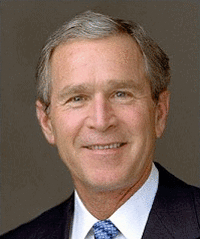
Fig. 04: Morphing two politicians.1
Interestingly, but not at all coincidentally, this very example illustrates an article about a computer program dedicated to sound morphing for compositional purposes. It is the trick whereby one can gradually move from one timbre to a different one, without interruption or superposition of the sound. There were transformations from a bee buzz to the clamor of a crowd, or from a choir boy’s voice to the spectrum of a church bell: musical achievements of very reputed composers, but whose software only few of them really understood or had access to.
It was Flusser’s belief that art should avoid being stupid by means of knowing and really ‘using’ technology in the process of making the art object. Perhaps he didn’t realise, at the time, that digital arts would be developed in an attempt to allay his fears concerning the awareness of the process. But this knowledge would not become an aesthetic solution, since audiences for this art will need the same degree of technological knowledge in order to decode its products.
More recently, after becoming less interested in artworks and concerts, and helped by the readings of authors concerned with media/technology, my interests became less focused on a humanistic view. Instead of trying to see the man behind the machine, I started to see, a bit closer, man’s entanglement with technology’s own subjectivity, one that reveals itself through technographic marks. Such authors discuss the properties of technological devices, employing different terminologies: machine, appareil, surface d’inscription, materialities of communication, dispositifs, etc (Agamben, 2006; Déotte, 2007; Gumbrecht & Pfeiffer, 1994; Serres, 2012; Stiegler, 1994). It is beyond the scope of this text to find out which among them is the most adequate, or to subscribe to the most persuasive theory. In order to legitimise this work to which I am devoted, I just wish to make myself as clear as possible in the description of an experience, which is, above all, a practice.
Although there are electronic audio devices involved in the article’s title, the expression feedback does not refer exclusively to the technographic traces left on captured and re-amplified sound, such as what Jimi Hendrix created on stage. The guitar player experimented different distances between the guitar and the speakers, which acted simultaneously as sources and reproducers of sound. The precise technographic mark I would like to describe lies on a more extended loop – both in matter and in time.
The expression feedback is also metaphorical, because it will translate not only what sort of connections acted in my own use of machines, but how much it involved my body and consciousness as well, as they became part of the physical / material experience. It is a case where the feedback circulated between my understanding and an electroacoustic device, adding a little bit of knowledge to my unfamiliarity with ornithological topics. After this explanation, I will give examples in broader areas.
Firstly, however, I need to explain the recurrent use of quotes, as I have done for ‘Nature’ and ‘music’. I did so, because I find it increasingly difficult to establish clear boundaries, especially whenever ‘music’ appears – in regards to its´ practice and its´ knowledge. Such vagueness permeates the whole text and the research with which I have been busy. The world of ‘animal’ sounds poses plenty of conceptual challenges, for it supposedly expresses ‘non-musical’ conditions, which I don’t want to judge. Thus, the use of floating concepts became a recurrent medium in my professional life, stimulated by the connection with contemporary music – especially electroacoustic music, the ‘music of all sounds’ – and with Fine Arts in general, which, during the second half of the last century, or more precisely ever since Marcel Duchamp and Dada, created repertoires where the establishment of limits is cheerfully complex. Therefore, quotes, here, are not ironically intended. They just mean a dynamic use of words. Instead of trying to solve complex themes like ‘humanity’, ‘animality’ and ‘machine’, where limits keep being questioned, I will only try to describe the radical alteration in attitude during a research undertaken between the years 2011 and 2014.
The feeling of being part of a feedback-loop has happened thanks to what I came to understand as electroacoustic literacy. What I mean by literacy is an understanding of the relationship between reading & writing texts, using letters and/or other symbols. A comparable relation happens when one participates actively in a process of audio technology involving pickup, recording, processing and reproduction. In ‘usual’ literacy we are part of a process that mixes at least several materialities: the letter, the written language, pen and paper to take notes, and the body, provided with eyes, memory and consciousness to participate in this mixture. In the electroacoustic experience, the process is similar but not less important to investigate.
Catching the Flycatcher
In several regions in Latin America, there is a bird whose vocalisations become fully observable at the peak of summer.
Each day Swainson’s flycatchers vocalize four or five different – and perhaps random – items, which all sound separate and scattered between dawn and nightfall. (I decided to employ the word item instead of Biology’s usual call, only because I am not sure how far the bird is really only calling, but this is a subject for another article. This word will only mean that there is a difference between them.)
As I went for a fully dedicated research into animal listening, I noticed that during the day some items that first appeared to me as if they belonged to different birds, actually came from a single individual. By the end of the evening one could listen to five items grouped together, strung across a progressive sequence, each one followed by another, all five joined in a solo that stands out in the relative silence of the other species.
As far as my first perception of the Swainson’s Flycatcher was concerned, I realised I was not the only agent involved: it was a process synchronized with audio recordings and their playbacks, without which I would not have paid enough attention – and consequently understood that the five previously separate items, actually came from one individual until then unknown to me.
This experience took place during a survey period held during postdoctoral research at the Universidade Federal de Minas Gerais in Belo Horizonte, that focused on the observation of acoustical animal expressions in forests and savannahs, near the place I was living.
What is remarkable in the Swainson’s Flycatcher expression is that, during its solo, the items line up, arranged in a row of increased complexity.
There is an evolving model: following the first, a plain note, a son tonique – as Pierre Schaeffer would describe a sound with a recognizable pitch and harmonic spectrum (Schaeffer, 1966) – the sequence evolves toward a more elaborate son complexe. A spectral analysis reinforces this perception.
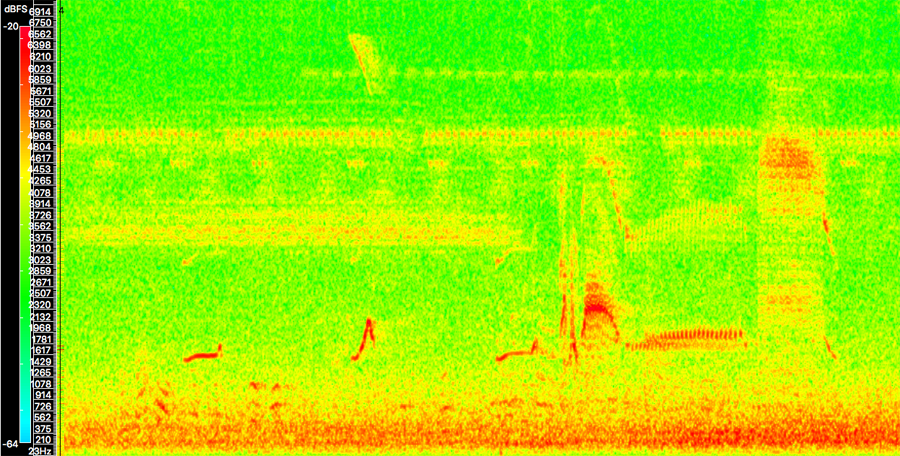
Fig. 05: Spectral analysis showing Sound 5’s flycatcher’s different items.
An almost straight dash, the note, followed by another in ascending-descending curve, another dash, this time followed by a more complex object, similar to the second curved item, comes with more energy, and then a trill located above the initial dash, finally leading to the complex mass of sound resolved in a high-pitched frequency modulation. At this point the flycatcher resumes the cycle, which will only be silenced by the arrival of night’s darkness.
During work sessions in the studio, while listening to recordings, for instance to sort older items from other individuals of other species, taken in other places, taken in other places, I noticed the presence – until then veiled to my ears – of those, now identified, items of the Swainson’s flycatcher. Although I’ve had always ignored this fellow, now its identification in many recordings jumped to my ears, thanks to a special interest I acquired after identification. One can notice here a slow driving feedback, as if the microphone capsule had first guided my attention to the Swainson’s Flycatcher’s solo, and – once identified – back to the recognition provided by playback.
A sample recorded back in Rio de Janeiro, many years ago is included below – before I knew the bird existed. What I first thought as being a bem-te-vi, the Great Kiskadee (Pitangus sulphuratus), may be the flycatcher. It is worth to stress that this act of recognition or doubt is too a result of the mediation allowed by audio technology. (Interestingly, this bird vocalizes more stridently than those in the forests of Minas Gerais. Perhaps this is due to a need to be heard through the loud and varied urban sounds.)
A flycatcher found in a recording taken in Rio de Janeiro, before I noticed their existence.
As far as selectivity is concerned, the mere use of recording equipment stimulated a different attitude in regards to my ‘objectivity’. A sort of protagonism of the electroacoustic circuit operated together with my attention, leading me to get closer to the bird, while being instrumental in the work of piecing the items together. Aware of the influence of mediated-listening, I posed myself methodological questions on how to start a new research, still focused on animal vocalisations, reviewing everything that, until then, had led me to the fieldwork. It became clear that my choices should be put under scrutiny. I am very thankful to the organizers of the ‘Out of Phase’ event2, because no expression describes better my perplexity after this experience.
In the beginning of the fieldwork, my attention toward animal vocalisations was directed, above all, to the search for individuals capable of delivering ‘curious’ and ‘composable’ sounding items, i.e. presenting ‘musical interest’ to my ears. Now, taught by the experience with the flycatcher, I acknowledge the reproduction of a colonial rapport with the exotic, in resonance with Edward Said’s discussion (Said, 1978). In the beginning, I went in search of ‘Eastern’ animals – in their distinction from our ‘Western’ music. The electroacoustic circuit, once I placed myself out of phase, helped me at least to be aware of my own subjectivity, and to start to pay attention to other less ‘spectacular’ but nevertheless very interesting vocalisations.
To conclude this section: it is as if the cogito, the Cartesian ‘I think’ – if I wanted to insist in object/subject polarisation – had to be replaced by ‘we think’, this ‘we’ being constituted by me, the machinery involved, the Swainson’s flycatcher, the flies or whatever else, the environment, etc. Once aware of the role of this mixture of agents, if one insists on keeping a scientific objectivity, one needs to participate in a sort of post-Cartesian cogitamus. It is not my intention to persist in such binarity.
As for the dowser’s fork and the shotgun microphone, the recorder and my brain memory, at every time, each tool expressed, in their own ways, a ‘mixed-media subjectivity’ that I have been trying to identify whenever technographic traces are detectable. The traces responsible for the flycatcher experience acted very positively towards my understanding of environment, harmony, silence and other musical stuff that may attract a composer’s ears.
Sometimes, more subtle subjectivities reveal themselves in less obvious media, but may be responsible for unforgettable moments and huge consequences, not only aesthetically speaking. In this regard, I would like to give as an example the effect of trains on Paul Valéry’s writings.
Different transportations
Coming back from a stay in Amsterdam, where René Descartes lived two centuries earlier, Paul Valéry surrenders to the rocking movement of the train, as described in his narrative Retour de Hollande (Valéry & Bersier, 1946). The rhythm of the wagons induced Valéry into a mediated abstraction, in what he understood as a mental state conducive to Cartesian meditations. Such condition is a clear and abstract mental alertness, stimulating reasoning ‘in its pure state’. It happens while the train moves, unattached to cities, their meanings and histories. What matters is the movement between them and its effect. But far from a philosophical style, Valéry’s text, made up to describe the condition, plunges us into poetry, close to hallucination.
This is what the poet had in mind while in Cartesian meditation:
A voyage is an operation that makes cities correspond to hours. Nevertheless, what I consider the most beautiful of it, and the most philosophical, lies in the intervals between these pauses.
Apart from kids, I don’t know if there are sincere rail amateurs who are train-pour-le-train aficionados. I don’t see those who would know how to enjoy, as enjoyable as it is, the roar and the power, the eternity and the route surprises. Children are the great masters of absolute pleasure. As far as I’m concerned, as soon as the wagon’s block starts moving, I abandon myself rocking to a naïve metaphysics mixed with myth.
I leave the Netherlands… Suddenly it seems to me that Time starts; Time ‘se met en train’; the train transforms itself in Time’s model, from which it takes its rigor and assumes its power. It devours all visible things, it agitates all mental things; with its mass it attacks brutally the world’s face, sending bushes to the devil, houses, provinces; it drops trees, drills arches, expedites posts, collects rudely all lines as they cross, and channels, furrows, trails; it changes bridges into thunders, cows into projectiles, and the stoned structure of its way in a carpet of trajectories…
Even the ideas, always surprised, dragged as if stretched by the torrent of visions, modify themselves, like a sound whose origin flies away in the distance. (Valéry & Bersier, 1946)
Comparable to this technographic trace of the train on Valéry’s meditation, may be the state of being chemically altered during music criticism, as told by Douglas Kahn.
Opening a Conference at The Fourth Annual ‘Activating the Medium’ Festival 2001, the North American musicologist chronicled an analytical description of his experience in listening to a piece found on a cassette tape (Kahn, 2001). While he was looking for something to entertain himself, Kahn randomly chose a tape lying on his table and put it to play. As he developed a deeper interest in what he listened, Kahn started to exercise a more formal description. After the work had finished, he discovered that the recorded music was not really a musical piece (by some composer); it was nothing more than residues on a demagnetized cassette, which previously might have stored a piece by a jazz musician. The demagnetization was not strong enough to erase all acoustic traces from the tape, leaving, instead, distorted bits of information, to a point that made the original unrecognizable. Before listening, Kahn had smoked a known herb capable of producing the effects thus described by him:
Euphoria. Thought magnification all the way to thought animation; formal structures seen on their own terms; aesthetic experiences, personal and sexual experiences, all brought into high relief. Self and other mix and pull apart. (Kahn, 2001)
(I need to reserve the word ‘Perspective’ for further development, below)
Then, Douglas Kahn describes the contents of his listening experience, from which I extract two paragraphs:
The repetitive sweeping set up a pulse, which at once related to the pace of the trade-offs from one instrumentalist to the next, and to the independent rhythmical elements submerged across the sweep from one moment to the next. There were little recursive eddies, mostly at the trade-offs, which would mark time by almost imperceptibly backing up now and then, and these too were taken up in the momentum of the pulse. This pulse had little in common with those used in some musics – popular and unpopular alike – where they are little more than a mushy metrical backbeat. This was more akin to Chinese pulses where the beating of the artery might be described as the “movement of water sliding over a crack, a man undoing his belt, or someone wishing to wrap something up, but lacking the cloth to go all the way around.” (these were mentioned by an incredulous French physician in the 18th century).
There were some things this music didn’t do. It didn’t dramatically change direction, or settle in at one spot, or exhibit any real lateral dynamic. Although streams do not run uphill, they will settle into pools, plunge over a cliff, fade into other streams or violently take other streams into themselves, and some can even appear to gradually run uphill. Multiple lines could have joined the sweep and the sweep could have angled out from the proscenium and added other dimensions. These limitations were good, because it meant that this group had plenty of other directions to explore. Having made a huge breakthrough, they had only scratched the surface. That seems to be the true test of artistic innovation. (Kahn, 2001)
Perhaps inaugurating something close to a ‘musicology under the influence’, Kahn ‘discovered’ a song that, for our judgment (I mean: in a ‘correct’ frame of mind) did not exist as such until Kahn invented it. What he experienced resulted from a bunch of scattered residual acoustic items – put together by his altered conscience. It is not different from my experience with the electroacoustic circuit, when ‘we’ – I and all other stuff surrounding me – assembled five items and then ‘discovered’ the flycatcher.
Who would nowadays deny Kahn’s experience as less ‘scientific’ and/or ‘not-musical’? The fact of being under the influence doesn’t change too much of reality, and doesn’t remove from the analysed piece, even if not a ‘piece’, its musical power. Being just a non-composed thing does not prove it can’t sound musical to someone.
The influence of drugs on perception points to the subjectivity of this chemical technology, as it leaves traces of a technology. I believe drugs should not be considered less of a medium than optical fibre.
Perspective
I asked the reader to take note of the interesting use of the word perspective by Kahn to describe his experience. It is the frame of mind one believes to be in, entitling one to the condition of objectivity. Perspective is a medium, a technique in drawing and architecture, which emerged and became celebrated from the Renaissance until today, now governing the supposedly natural reproduction of the visual field. The twentieth century saw a revival of this illusion in its sonorous / musical transposition in the so-called stereophony and later the 3D.
Today, with the benefits granted by hindsight that our times have permitted, we may propose an understanding of the Cartesian philosophy as related to another altered state of mind, that was stimulated not by means of rail transport – as seen in Valéry and which was obviously non-existent at the time of René Descartes -, but by a visual tool capable of providing a stereoscopic sense that lead to the separation between subject and object, the ‘Perspectiva’ that Brunelleschi and other Renaissance artists rediscovered and diffused many years before the issue of the Discourse on Method.
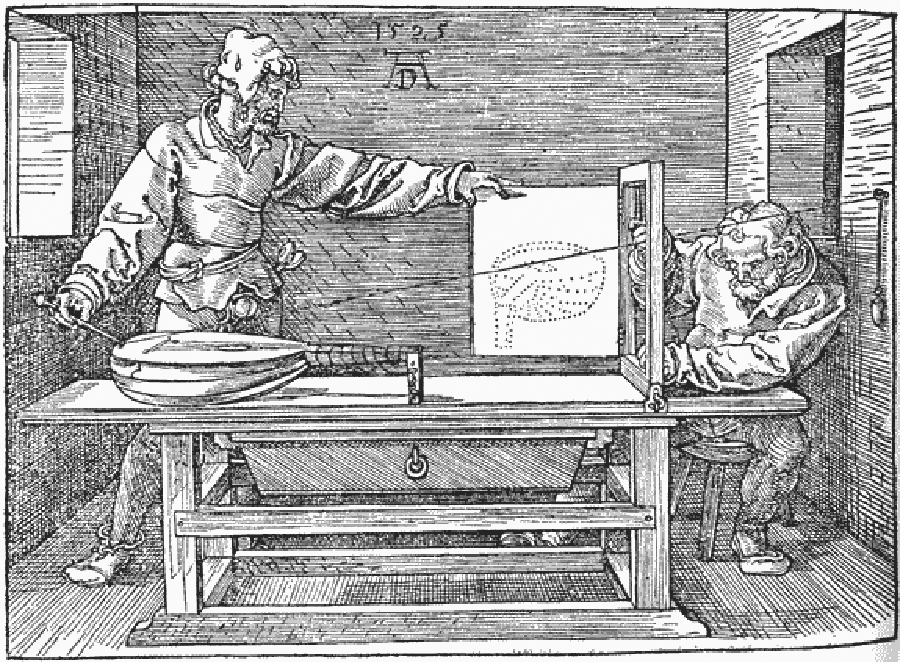
Fig. 06: The device permitting to draw with perspective. Illustration by Albrecht Dürer. (In
Unterweysung des Messung, 1535)
Without this device, by which means the artist sees the vanishing point through a flat mirror, Brunelleschi would have hardly created the foundations for the Renaissance perspective. And without it, the Renaissance culture would not have adopted the vanishing point, within which one could focus on the object, separating it from the rest and from oneself, so as to constitute the couple subject / object, foundation of the Cartesian rationalist philosophy.
Many authors agree, and even René Descartes’ own biographer, that the great philosopher-mathematician’s Discours de la Méthode was influenced by three famous dreams that happened during the night of the 10th of November of 1619. Adrien Baillet, the biographer, narrates the dreams as if they were his own, with a precision that can only be due to having been told by Descartes himself. There were three very complex dreams, but for this text I will direct my attention expressly to Baillet’s own words (Baillet, 1691), as he looks for the possible sources of Descartes’ dreams:
This last imagination had certainly something of an enthusiasm, so much so that it would lead one to believe that M. Descartes had something to drink before going to sleep. Actually, It was Saint Martin’s Eve, a day in which it was a costume to faire de la débauche, at the place where he was, in France. But he assures us that he spent the evening and the whole journey in sobriety, and that he was already without drinking for three months. He adds that the génie who excited his enthusiasm – a condition, he felt, warmed his brain for some days – foretold these dreams even before he went to bed, and that the human spirit had no part to play. (Baillet, 1691, pp 81-82)
But in a more rational guise, one puts less strain in belief by simply inferring that Descartes’ malin génie – the counter-incentive that helped him build his philosophy – had more chances to appear in dreams when the dreamer was mediated by spirited technologies. Which, by the way, constituted one of St. Martin’s notorious knowledge, especially as white wine is concerned.
Conclusion
It is not my intent, and out of our reach to stop this continuous process of intoxication whereby we become the most mixed media. I am not ‘against’ being intoxicated. I am, or we are all, now, so intoxicated by all sorts of media that one would not know where to start and where to draw a line between ‘us’ and the ‘media’. From the alarm clock and toothpaste in the morning until the last elevator noise in the night we find time to spend with twitter and with buses, with TV sets during breakfast at the hotel, etc. How can one be ‘against’ all that? It’s too much, and perhaps we should try not to feel overwhelmed. We may be rewarded whenever intoxication is at least acknowledged and identified.
For this to happen, one of the best medicines (another toxic substance?) is to remove ourselves from the ‘natural’ state we believe to be, and become somehow ‘out-of-phase’. For instance: when we invert the phase of one of the channels of a stereo recording, the notion of ‘natural’ space is destroyed, but other weird spatial feelings ensue. A sensation of ‘unnatural’ is created, enough to call the attention to the technographic trace of the stereo system that the music industry started to sell in the fifties, and we naturalized in our electroacoustic pieces, especially in the soundscape genre. Once ‘out-of-phase’, the recognition of the effect may induce the artist to ask themselves how much of Brunelleschi – or even Descartes and ‘objectivity’ – they want to keep propagating in works of art. Art, supposedly, is the field where we are not only allowed to – we actually should – make questions instead of accept all things as – we might believe – they ‘are’.
Footnotes
- No author could be found for this animation. Although it all points that it was made during the Bush transition to Barack Obama´s presidency. [↩]
- An earlier version of this text was presented at the SONOLOGIA 2016: out of phase conference that took place in São Paulo, November 2016 (22nd to the 25th). [↩]
References
Agamben, G. (2006). Qu’est-ce qu’un dispositif. Paris: Payot-Rivages Poche.
Baillet, A. (1691). La vie de M. Descartes. Paris: D. Hortemels.
Caesar, R. (1992). The composition of electroacoustic music (Ph.D.). University of East Anglia, Norwich.
Caesar, R. (1996). Artefatos FM para a produção de ritmos “pseudo-naturais.” In Anais do III Simpósio do NUCOM. Recife: UFP.
Caesar, R. (1997). Um encontro da composição com a bio-acústica via FM. In Anais do X Encontro Anual da ANPPOM. Goiânia: UFG.
Caesar, R. (2002). A eletrônica de uma poética em “Rana-Gaô.” In Anais do III Colóquio de Pesquisa (pp. 29–34). Rio de Janeiro: Programa de Pós-graduação EM/UFRJ.
Caesar, R. (2008). Círculos Ceifados (Vol. 2). Rio de Janeiro: 7Letras.
Chowning, J. (1973). The synthesis of complex audio spectra by means of frequency modulation. Journal of the Audio Engineering Society, 21(7), 526–534.
Déotte, J.-L. (2007). Qu’est-ce qu’un appareil? Benjamin, Lyotard, Rancière. Paris: L’Harmattan.
Gumbrecht, H. U., & Pfeiffer, K. L. (1994). Materialities of communication. Stanford: Stanford University Press.
Kahn, D. (2001). Rapt in attention: Drugs and Sound. Presented at the The Fourth Annual Activating the Medium Festival, Venice: 23five Incorporated and Cuesta College Fine Arts hosted in conjunction with The San Francisco Museum of Modern Art California Polytechnic State University and Beyond Baroque. Retrieved from http://www.23five.org/atmlist.html
Palombini, C., Brunet, S., & Schaeffer, P. (2010). Essai sur la radio et le cinéma. Paris: Éditions Allia.
Said, E. (1978). Orientalism. New York: Random House.
Schaeffer, P. (1966). Traité des objets musicaux. Essai interdisciplines (2nd ed.). Paris: Éd du Seuil.
Serres, M. (2012). Petite Poucette. Paris: Le Pommier.
Smalley, D. (1986). Spectro-morphology and structuring processes. In The Language of Electroacoustic Music (pp. 61–96). London: The MacMillan Press Ltd.
Stiegler, B. (1994). La technique et le temps. Tome 1. La faute à Épimethée (1st ed.). Galilée.
Taborda, T. (2004). Biocontraponto: como aprendemos contraponto com os sapos. Um enfoque bioacústico para a gênese do contraponto e das técnicas de estruturação polifônica. (Ph.D.). Universidade Federal do Estado do Rio de Janeiro, Rio de Janeiro.
Valéry, P., & Bersier, J. E. (1946). Le retour de Hollande: suivi de Fragment d’un Descartes. Compagnie française des arts graphiques. Retrieved from https://books.google.com.br/books?id=TviMHAAACAAJ
Vilém Flusser, “On Writing, Complexity and Technical Revolutions”, Interview by Miklós Peternák in Osnabrück, European Media Art Festival, September 1988 (10’30’’). (n.d.). Retrieved from https://www.youtube.com/watch?v=lyfOcAAcoH8
Bio
Rodolfo Caesar is a professor at UFRJ School of Music in Rio de Janeiro. He studied in the early days of the Instituto Villa-Lobos, as it was conceived and coordinated by Reginaldo Carvalho. There began Rodolfo’s interest in the relationship between new technologies and music. Having been a Pierre Schaeffer’s ‘stagiaire’, he graduated in electroacoustic music at the CNSM de Paris. Since then, Rodolfo composes autonomous pieces, or works related to other arts, such as dance, theater, cinema, poetry and the visual arts. His pieces are displayed in galleries or museums, or played in concerts and radio broadcasts. His current research project, funded by CNPq (National Counsel of Technological and Scientific Development), addresses music’s different materialities, as it questions bio-acoustics and contemporary musical aesthetics.

